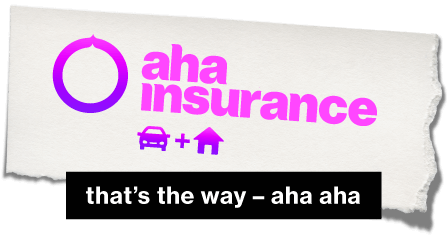According to police reports from 2017, more than 3,700 bikes were reported stolen in the Toronto region. That’s a 26% increase since 2014, making it important that we all know how to prevent bike theft.
Most people cover bikes under their contents insurance policy (part of home insurance policies for home owners), but serious cyclists and professional athletes with expensive equipment might have a specific insurance extension for theirs.
We wanted to share these tips because we’ve had ours go missing once or twice, too. Follow these tips to protect yours!
Hiding your bike gives thieves privacy
Avoid leaving it easily accessible in the streets if you can. Although this is glaringly obvious, leaving your bike out in the open will sometimes be your only option. Your workplace might have a secure parking area to accommodate your bike, but if you are going to a gym, or stopping by a store, then you may not always be able to park it securely.
While it goes without saying that you should have a lock and always ensure you are locking the bike to a heavy, immovable structure or object, you still have to pay attention to your parking location. For example, you might think that your bike will be safe if you lock it out of immediate sight, in an alley somewhere. But, by doing this, you are just giving the potential thief all of the seclusion they’ll need to take off with it unnoticed.
If you have no other choice, make sure you lock your bike in a bright location people often pass through. Thieves will be much less likely try anything if they think they’ll get caught.
Find the best bike lock available
This is a must have for everyone owning a bike. But how will you know which lock to choose? While you can certainly set aside some petty cash and purchase a cheap lock from Dollarama, an experienced bike thief will make quick work of it.
If you look into the high-end bike lock brands, you are quickly going to notice that each manufacturer offers the lock’s security rating so that you can distinguish the more secure solutions. Unfortunately you can’t compare the manufacturer’s internal ratings with each other, but it’s a start.
Luckily, there are independent organizations that offer a security rating based on real, standardized tests of how much a lock can withstand. You can use these ratings to make an educated decision and purchase the best lock for your bike.
Check out these publications with bike lock reviews to get started:
Investing in a top-notch bike lock is probably the best way to prevent bike theft in general, so don’t just go for the cheapest option!
Store your bike inside (even if it’s not convenient)
When at home, try to keep it inside! Even if you have a shed for storage, it’s probably not as secure as your home’s main building. They’ve been known to break into sheds and take all of the time in the world to get the bike out. Sheds present a low risk, and people rarely watch them.
It might be inconvenient to keep it inside of an apartment, for example, but there is a significantly smaller chance of someone breaking into your home and stealing the bike right from under your nose that way. You can also keep it on a balcony if you live above the first floor, or even get a wall mount to store your bike.
Don’t leave your bike at the same location for too long, if you do need to store it outside. If they see that the same bike is sitting around in the same place for too long, they’ll assume it’s up for grabs and you won’t notice it’s gone. Even if you are commuting to work on a bike, leaving it at a different location every now and again will throw the thieves off of your trail and make them move on to easier targets.
Insure a high-value bike if you have one
The most expensive bike stolen in Toronto was $23,000, according to to the CBC. Even if you’re not a professional cyclist with wheels like that, bikes are still pretty expensive for most of us. Think about insuring your bike if it’s more than $600-$700 as a part of your contents insurance policy.
It raises the contents insurance rate slightly, but that sure beats paying another $600-$1,200 for a brand-new bike. You might be able to get a discount on your home insurance rate if you have anti-theft security features, too.
Join Project 529
The bike theft numbers in Toronto saw a significant rise since 2014, increasing by 26% by the year of 2017. Vancouver was only second to Toronto when it came to the number of bikes stolen per year, until Project 529 was created.
This bike theft prevention app, powered by its community, was such a success that it decreased the number of bike theft occurrences in Vancouver by a whopping 30%! Edmonton, Calgary and Winnipeg are considered to be the three Canadian cities with the lowest bike theft count, but we feel the effects of bike theft in places like Toronto, Guelph, and Hamilton.
That’s how to prevent bike theft in all kinds of places. Taking any or all of these steps is going to help ensure your bike will always be waiting for you exactly where you left it. You will definitely feel peace of mind knowing that you can go about your business for the day without fearing that your bike might get picked up.
Get your quote from aha insurance today, to make sure you’ll get some good protection for your favourite bike!






